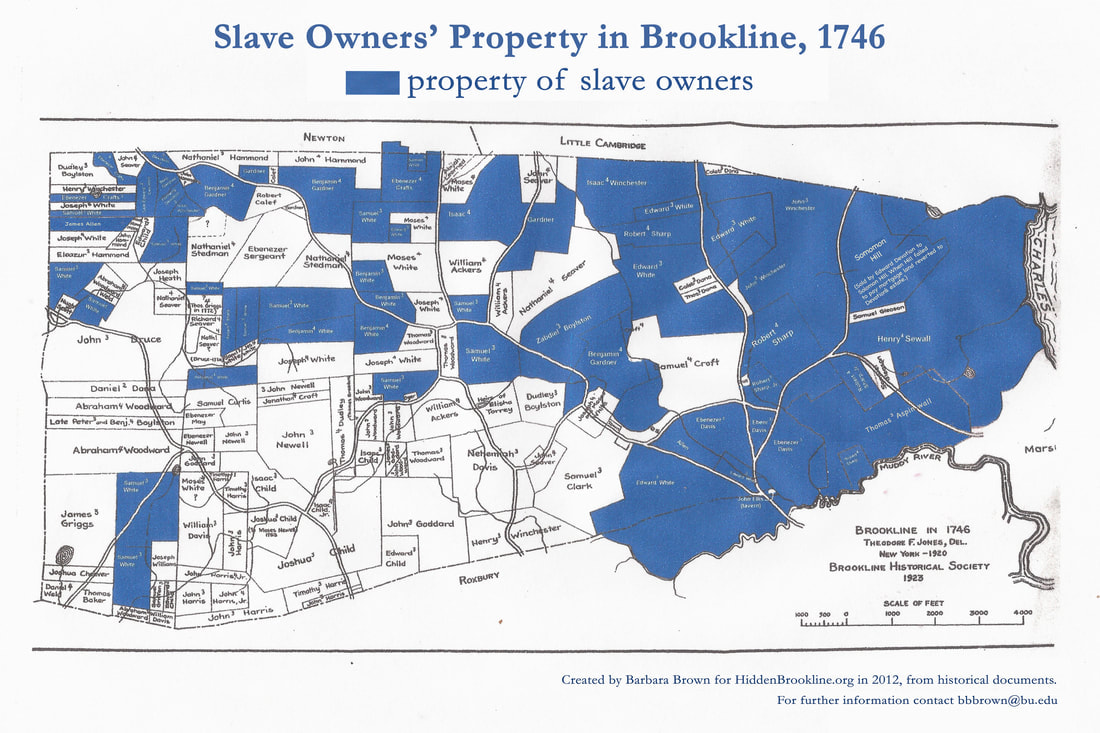Slavery was common and ordinary
Long before the settlers came, the Massachusett had settled this land. During the 1600’s, Brookline colonists gradually pushed the Massachusett off the land and out of town. Town Meeting records from that period attest to the settlers’ deep distrust and fears of Native people here.
Native Americans were the first slaves in Brookline, bought in 1675 for resale into the Caribbean. By the early 1700’s only a handful of Native people still appear in town records.
Roughly forty-two families enslaved roughly 90 people. In 1746, enslaving families owned over half of all land. Such slavery was common. In Boston, 12-15% of the population were enslaved at that time.[1] In fact, all thirteen colonies were slave-owning.
Native Americans were the first slaves in Brookline, bought in 1675 for resale into the Caribbean. By the early 1700’s only a handful of Native people still appear in town records.
Roughly forty-two families enslaved roughly 90 people. In 1746, enslaving families owned over half of all land. Such slavery was common. In Boston, 12-15% of the population were enslaved at that time.[1] In fact, all thirteen colonies were slave-owning.
This map is based on the map above, showing slave-owners’ properties in 1746.
Life for enslaved people in Brookline held many cruelties, including those specific to this region. The principal one was life-draining social isolation. Yet Brookline’s enslaved men and women were resilient: some by simply enduring, others by finding ways to meet, still others by asserting their adulthood in the face of deliberate efforts to humiliate them.
Almost all prominent families were enslavers, including names that continue to be recognized : Aspinwall, Boylston, Heath, Devotion, Sewall, Winchester and Gardner, among others.
At least six slave traders called Brookline home. Successful slave traders were among the wealthiest and most powerful men of the Massachusetts colony. In fact, New England itself was the center of the international slave trade.
Slavery in Massachusetts ended around 1780. (Scholars continue to dispute the year.)
In a society with slaves, racism became the norm in Massachusetts. The overarching norms and practices have continued, even two hundred years after slavery in Massachusetts had ended.
At least six slave traders called Brookline home. Successful slave traders were among the wealthiest and most powerful men of the Massachusetts colony. In fact, New England itself was the center of the international slave trade.
Slavery in Massachusetts ended around 1780. (Scholars continue to dispute the year.)
In a society with slaves, racism became the norm in Massachusetts. The overarching norms and practices have continued, even two hundred years after slavery in Massachusetts had ended.
Notes and Citations
[1] Jared Hardesty, author of Unfreedom: slavery and Dependence in 18th c. Boston, cited these figures at two of his presentations: at the Old North Church (2016) and at the Royall House and Slave Quarters (2019).
